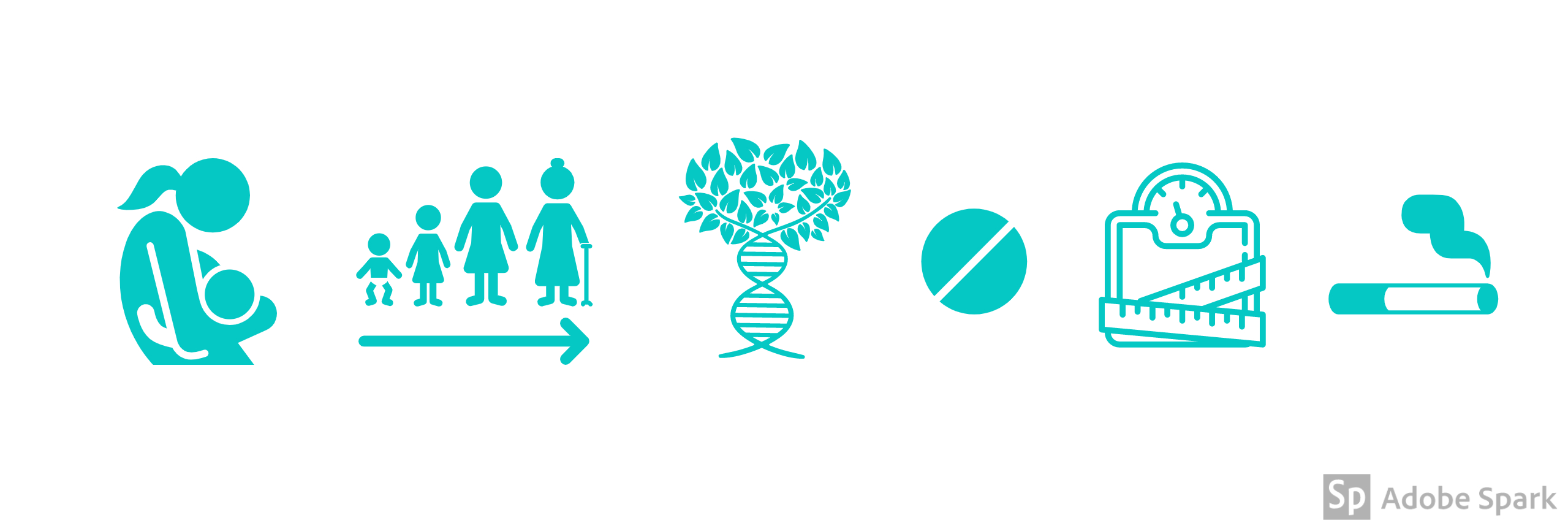
- Increasing Age
As with most cancers, your risk of developing ovarian cancer increases with your age. Ovarian cancer is uncommon in women younger than 40 and most ovarian cancers develop in women aged 75 to 79, after menopause.
- A high body mass index (BMI)
Your BMI is calculated using your age, height, and weight. It provides a weight classification based on a scoring system ranging from less than 18.5, 18.5 to 24.9, 25 to 29.9, and 30 to 39.9, i.e. underweight, healthy, overweight, and obese, respectively. An increased BMI is associated with an increased risk for many cancers, including ovarian cancer.
- Having children and Breastfeeding
Both having children and breastfeeding reduce the risk of ovarian cancer. The younger you are when you first give birth and the more children you have, the lower your chance of developing ovarian cancer.
- Hysterectomy and Tubal Ligation
Having a hysterectomy (i.e. removal of the womb) or tubal ligation (i.e. sterilization, tubes tied) are both associated with a reduced risk of ovarian cancer.
- Endometriosis
Endometriosis, a disorder in which tissues similar to the womb lining grow elsewhere in the pelvis such as the ovaries or fallopian tubes, affects about 10%-15% of women in reproductive years, and it is associated with an increase in risk of ovarian cancer.
- Aspirin Use
Compared with women who do not take aspirin regularly, regular use of aspirin has been shown to be associated with a decrease in risk of ovarian cancer.
- Oral Contraceptive Use
Long-term use of the combined (oestrogen + progestin) oral contraceptive pill is associated with a reduced risk of ovarian cancer, with about 20% decrease in risk for every 5 years of use.
- Hormone Replacement Therapy (HRT) Use
HRT use after menopause is associated with an increased risk of ovarian cancer.
- Family History of Breast and Ovarian Cancer
Having a mother, sister, or daughter who have been diagnosed with ovarian cancer is associated with a three- to seven-fold increase in risk, depending on number of affected relatives and their age when they were diagnosed.
- Smoking
Cigarette smoking is associated with an increased risk of some histologic subtypes of ovarian cancer, like mucinous ovarian cancer.
If you wish to find out more about factors associated with increased ovarian cancer risk please visit the Cancer Research UK website.
Reference
Reid, B., Permuth, J., & Sellers, T. (2017). Epidemiology of ovarian cancer: a review. Cancer Biology & Medicine, 14(1), 9–32. https://doi.org/10.20892/j.issn.2095-3941.2016.0084 (https://www.ncbi.nlm.nih.gov/pmc/articles/PMC5365187/)


